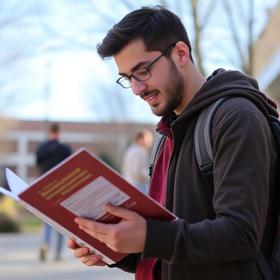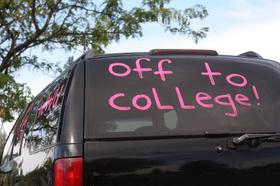- Pima Medical Institute is a highly experienced and proven leader in health care. For more than 35 years, Pima Medical Institute has offered specialized, quality healthcare training that is quick and affordable, and we have been serving the mesa community since 1986. in mesa, we offer medical training in certificate programs like dental assistant, massage therapist, medical assistant, nursing assistant, pharmacy technician, phlebotomy technician, veterinary assistant. Your earning potential is in your hands as traditional health care continues to embrace alternative therapies such as massage. Students in the Massage Therapy School in Mesa have the advantage of receiving an education from a career college that has focused exclusively on medical and healthcare career training for more than 35 years.
School Highlights
Pima Medical Institute-Mesa serves 1,045 students (100% of students are full-time).
The college's student-teacher ratio of 9:1 is lower than the state community college average of 22:1.
Minority enrollment is 60% of the student body (majority Hispanic), which is less than the state average of 61%.
Quick Facts (2025-26)
- Enrollment: 1,045 students
- Student-teacher ratio: 9:1
- Minority enrollment: 60%
- Source: Integrated Postsecondary Education Data System (IPEDS)
Top Rankings
Pima Medical Institute-Mesa ranks among the top 20% of public schools in Arizona for:
Category
Attribute
Diversity
School Overview
The teacher population of 111 teachers has stayed relatively flat over five years.
Pima Medical Institute-Mesa
(AZ) Community College Avg.
Carnegie Classification
Special Focus Two-Year: Health Professions
Baccalaureate/Associate's Colleges: Mixed Baccalaureate/Associate's
Institution Level
At least 2 but less than 4 years
At least 2 but less than 4 years
Institution Control
Private for-profit
Public
Total Faculty
111 staff
202 staff
Number of Programs Offered
9
17
Student Body
The student population of Pima Medical Institute-Mesa has grown by 22% over five years.
The student-teacher ratio of 9:1 has increased from 7:1 over five years.
The Pima Medical Institute-Mesa diversity score of 0.72 is more than the state average of 0.71. The school's diversity has grown by 9% over five years.
Total Enrollment
1,045 students
5,392 students
Student-Teacher Ratio
9:1
22:1
# Full-Time Students
1,045 students
1,208 students
# Part-Time Students
n/a
4,184 students
# Enrollment Undergraduate
104 students
339 students
# Full-Time Undergraduate Students
1,045 students
1,238 students
# Full-Time Graduate Students
n/a
66 students
# Part-Time Undergraduate Students
n/a
5,400 students
# Part-Time Graduate Students
n/a
11 students
Total Dormitory Capacity
n/a
250 students
% American Indian/Alaskan
6%
3%
% Asian
4%
4%
% Hispanic
33%
36%
% Black
6%
7%
% White
40%
39%
% Hawaiian
1%
2%
% Two or more races
8%
4%
% Non Resident races
n/a
1%
% Unknown races
1%
4%
Diversity Score
0.72
0.71
College Completion Rate (Students who graduate in less than 4 years)
54%
49%
College Completion Rate (Students who graduate in 4 years or more than 4 years)
n/a
60%
Average Graduate Earnings (10 Years)
$29,800
$32,900
Tuition and Acceptance Rate
% Students Receiving Some Financial Aid
82%
82%
Median Debt for Graduates
$9,500
$9,500
Median Debt for Dropouts
$4,718
$4,750
Acceptance Rate
n/a
100%
Source: 2024 (or latest year available) Integrated Postsecondary Education Data System (IPEDS) , School Administrators
Frequently Asked Questions
What is Pima Medical Institute-Mesa's ranking?
Pima Medical Institute-Mesa ranks among the top 20% of community college in Arizona for: Diversity in US community colleges.
Recent Articles

How to Transfer from Community College to a Four-Year University in 2025
A step-by-step guide for community college students transferring to a four-year university in 2025 — updated strategies, data and expert insights.

Scholarships for Community College Students 2025
Explore updated scholarship programs, tuition data, and expert strategies for community college students in 2025.

The Rise of Technical and Vocational Training in 2025
Explore the 2025 surge in technical and vocational training—enrollment, policy, costs, and why this path is gaining ground for students and parents.







